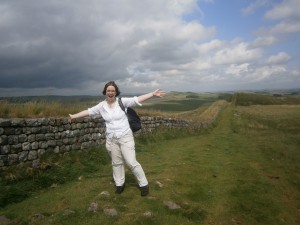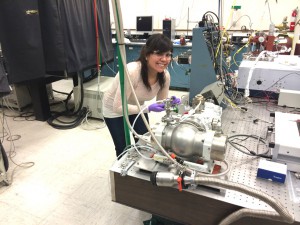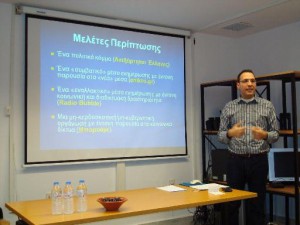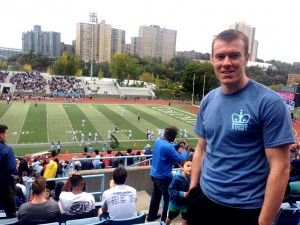
Catherine Sheard, 2012-2013, United Kingdom, posing along Hadrian’s Wall about 50 miles into the trail between Housesteads Roman Fort and Crag Lough, England
(Photo courtesy of Eliza Gettel)
Once every two weeks, I leave the office early, walk down to the field behind my department, and score-keep a cricket match. Cricket enthusiasts are almost exclusively fit, well-coordinated middle-aged men from the Commonwealth, which I most definitely am not. It turns out that you don’t need to be able to actually play cricket in order to score it. You just need to count accurately, to bellow loudly, and to stay sober until the end of the match; something I, a brash non-drinker with a degree in mathematics, can handle.
After almost a year of living in the United Kingdom—and almost an entire season of cricket—I now know my wickets from my overs and my byes from my leg byes, not to mention my “pants” from my “trousers” and my “chips” from my “crisps.” I came to England on a Fulbright Study/Research grant to begin a Ph.D. in Zoology, based at the University of Oxford’s Grey Institute of Ornithology, and here I have learned much about birds, sports, and life itself.
If you do it properly, earning a Ph.D. is a lot like scoring cricket. There’s a lot of tedium, yes, but then there’s also a lot of excitement. I spend about half of my time programming a computer to simulate avian evolution and the other half measuring the dusty carcasses of birds killed in the 1800’s, but really, what I’m studying is sexual selection, the reproductive success of a creature determined by how melodious its song is or how brightly colored its feathers are. Comparing Cricket to my research, there are always going to be dot ball moments, times where a worthy ball is ‘bowled’ but without a run resulting from it. But there are also the ‘sixes’ (an automatic six run score from hitting the boundary mark) when the batter’s on 29 runs, which can be as exciting as the simulation that finally runs and condenses pages of code and megabytes of data into a simple statistical statement about evolution.




